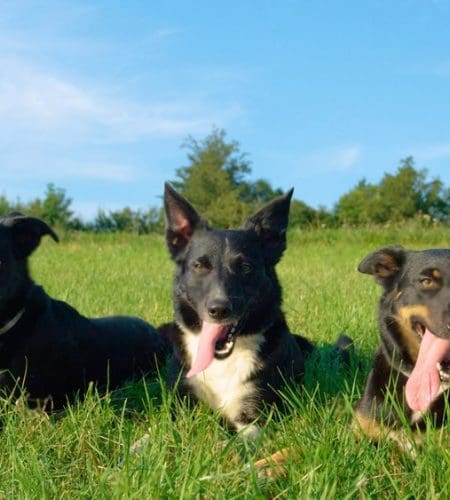Ever wondered why pooches pant so much? It’s like they’re in a constant state of heavy breathing, with their tongues hanging out and their snouts all wet. Well, let me tell you, there’s more to it than meets the eye. Dogs panting is not just some strange behavior; it serves a vital purpose in their lives. Pups use panting as a form of body language to communicate and regulate their airway.
You see, pups and pooches pant to regulate their body temperature. Unlike us humans who have sweat glands all over our bodies, dogs only have them on their paw pads. So when they get hot, instead of sweating like we do, they rely on fast breathing, or panting, as their natural cooling mechanism.
Panting is completely normal for dogs, especially during warmer weather or after intense exercise. It helps them cool down and prevent overheating. Different breeds of dogs may pant more or less depending on factors such as size, coat thickness, and overall health. If your pup starts fast breathing excessively, it could be a sign of heatstroke.
Understanding dog panting is crucial for the health and comfort of many dogs. By recognizing signs of excessive or abnormal panting, you can ensure your pooch stays safe from heatstroke. If your dog pants excessively without any apparent reason or shows signs of distress, consult with a vet immediately to prevent any minute complications.
So next time you see your healthy dogs panting away, remember that it’s not just heavy breathing—it’s an essential part of being a dog. Their unique respiratory system has evolved over time to keep many dogs cool and comfortable in the heat. Embrace the adorable sight of your pet with its tongue hanging out and know that they are doing what comes naturally to them—panting!
Now that we’ve scratched the surface of this intriguing topic let’s dive deeper into why dogs pant and what it means for our beloved pets.
Understanding Excessive Dog Panting
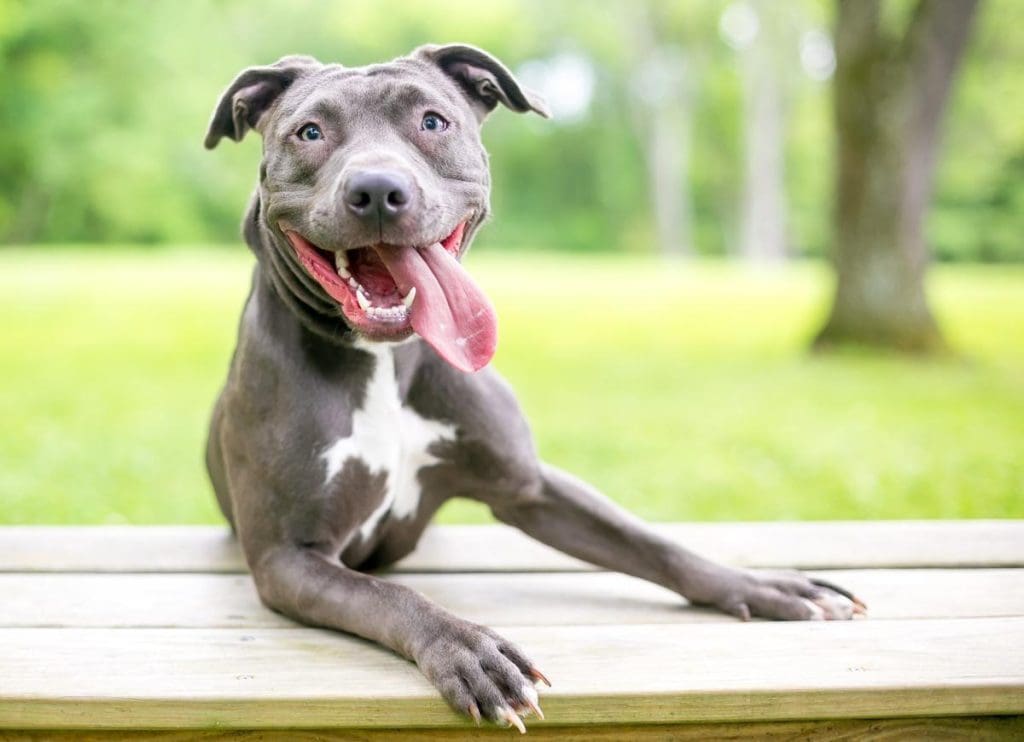
Excessive dog panting can be a cause for concern among pet owners. While panting is a normal behavior in dogs, it’s important to differentiate between normal and excessive panting. Excessive panting may indicate an underlying issue or discomfort that requires attention. By understanding the signs of excessive dog panting and its potential causes, you can ensure the well-being of your furry friend.
Differentiating Normal from Excessive Panting
Dogs naturally pant to regulate their body temperature, especially when they are hot or after physical activity. It’s their way of cooling down since they don’t sweat like humans do. This type of panting is considered normal and nothing to worry about.
On the other hand, excessive panting goes beyond what is considered typical for a dog in a given situation. If your dog is excessively panting even when they are not exerted or exposed to high temperatures, it could be an indication of an underlying problem.
Signs of Distress or Discomfort
Excessive panting in dogs can be a sign that something is wrong. It’s crucial to pay attention to other accompanying signs that may suggest distress or discomfort. These signs include:
- Restlessness: If your dog seems restless, unable to settle down, or constantly shifting positions while excessively panting, it could be a cause for concern.
- Rapid breathing in a normal dog: Heavy and rapid breathing accompanied by excessive panting might indicate respiratory issues or heart problems.
- Lethargy: If your normally energetic pup suddenly becomes lethargic and shows no interest in activities they usually enjoy, it could be related to excessive panting.
- Pale gums: Check your dog’s gums – if they appear pale instead of their usual healthy pink color, it might signal a lack of oxygen circulation due to excessive breathing.
- Drooling: Excessive drooling along with heavy panting might point towards nausea or pain in your dog.
It’s important to note that these signs can vary depending on the individual dog and the underlying cause of the excessive panting. Consulting with a veterinarian is always recommended to determine the exact cause and appropriate course of action.
Early Identification for Prompt Care
Recognizing excessive panting early on can help you identify potential problems before they escalate. Regularly monitor your dog’s breathing patterns, especially during different activities or environments. By establishing what is normal for your dog, it becomes easier to spot any changes that may indicate excessive panting.
If you notice any sudden or persistent increase in panting, it’s essential to investigate further. Keep an eye out for triggers such as stress, anxiety, heat exposure, exercise intolerance, or specific situations that consistently lead to heavy panting. Documenting these observations will provide valuable information when discussing the issue with your veterinarian.
Insights into Overall Health and Well-being
Monitoring your dog’s breathing patterns not only helps identify potential problems but also provides insights into their overall health and well-being. Changes in panting behavior could be indicative of various conditions such as:
- Pain: Dogs may excessively pant due to pain caused by injuries, arthritis, dental issues, or internal discomfort.
- Respiratory issues: Excessive panting might be a sign of respiratory infections, allergies, asthma, or other respiratory disorders.
Recognizing abnormal dog panting
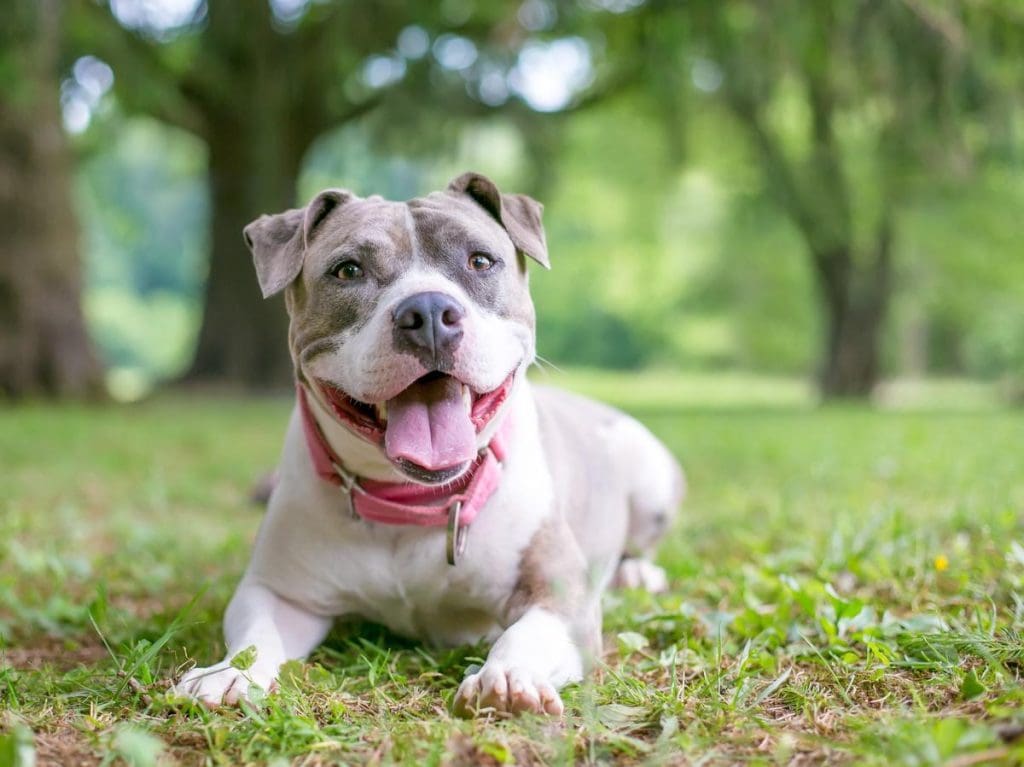
If you’re a dog owner, you’re probably familiar with the sound of your furry friend panting after a run or on a hot day. Panting is a normal behavior for dogs, allowing them to regulate their body temperature and cool down. However, it’s important to recognize when panting becomes abnormal and may indicate an underlying problem.
Abnormal panting: A cause for concern
Abnormal dog panting can manifest in different ways, including rapid, shallow breaths or prolonged episodes of heavy breathing. These deviations from the usual breathing pattern should be taken seriously as they may indicate an underlying health issue. If you notice that your dog is breathing faster than usual or struggling to catch its breath, it’s essential to pay attention and investigate further.
Unusual sounds during breathing are another red flag. Wheezes or rasps that accompany your dog’s breathing should not be dismissed lightly. These sounds could suggest respiratory distress or obstruction that requires prompt veterinary attention.
Distress and behavioral changes
One clear sign that your dog’s panting is abnormal is if they appear distressed while doing so. Dogs in distress may exhibit signs such as restlessness, pacing, whining, or inability to settle down. It’s crucial to observe any behavioral changes accompanying the abnormal panting as they can provide valuable clues for diagnosis and treatment purposes.
By paying close attention to your pet’s behavior during episodes of abnormal panting, you can help your veterinarian better understand the potential causes behind this unusual symptom. Remember that dogs cannot communicate their discomfort verbally like humans do; therefore, changes in behavior become even more critical in identifying underlying issues.
Distinguishing between normal and abnormal patterns
Differentiating between normal and abnormal breathing patterns in dogs plays a vital role in assessing your pet’s overall health. Understanding what is typical for your dog will enable you to identify any deviations that may require attention.
Normal panting in dogs typically occurs after exercise or during warm weather. It is characterized by a steady rhythm, moderate intensity, and the absence of distress signals. On the other hand, abnormal panting may include irregular breathing patterns, excessively fast or slow breaths, and signs of discomfort or distress.
By familiarizing yourself with your dog’s normal breathing pattern, you can quickly spot any changes that may indicate a problem. Monitoring their respiration rate during different activities and environments can help you establish a baseline for comparison.
Common causes of excessive panting in dogs
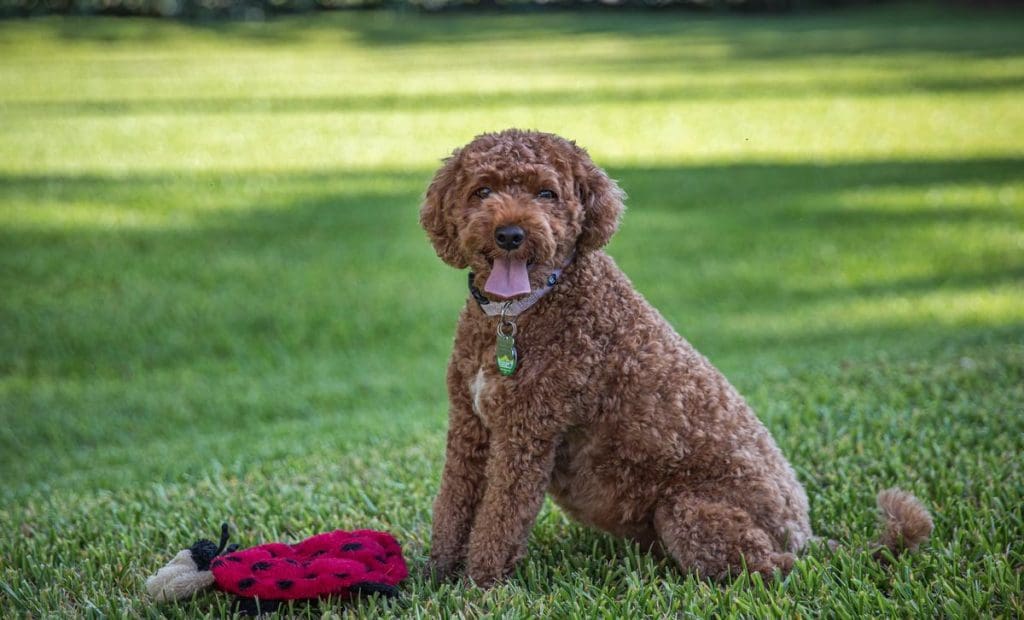
Heatstroke or overheating
One common reason why dogs pant excessively is heatstroke or overheating. Dogs have a limited ability to regulate their body temperature, and when exposed to high temperatures for prolonged periods, they can easily become overheated. This can lead to excessive panting as their bodies attempt to cool down. It’s important to ensure that your dog has access to shade and fresh water during hot weather, and never leave them in a parked car, as the temperature inside can quickly rise to dangerous levels.
Anxiety and stress
Just like humans, dogs can experience anxiety and stress. These emotions can cause an increased respiratory rate in dogs, leading to excessive panting. Dogs may exhibit signs of anxiety or stress in various situations such as thunderstorms, fireworks, separation from their owners, or being introduced to new environments. If you notice that your dog is panting excessively in these situations, it’s important to provide them with a safe and calm environment where they feel secure.
Pain or discomfort from injuries or illnesses
Another common reason for excessive panting in dogs is pain or discomfort resulting from injuries or illnesses. Dogs may pant heavily if they are experiencing pain due to an injury such as a sprain or fracture. Certain medical conditions like respiratory infections or gastrointestinal issues can lead to increased respiratory rates and consequently excessive panting. If you suspect that your dog is in pain or discomfort, it’s crucial to consult with a veterinarian for proper diagnosis and treatment.
Certain medications
Some medications prescribed for dogs may have side effects that include increased respiration rates and subsequent excessive panting. This can occur with medications used for various purposes such as pain management, allergies, seizures, or heart conditions. If you notice that your dog starts panting excessively after starting a new medication regimen, it’s essential to inform your veterinarian so they can evaluate whether the medication is causing the panting and make any necessary adjustments to the treatment plan.
Obesity
Obesity is a growing concern among dogs, and it can contribute to excessive panting. When a dog is overweight, it puts extra strain on their respiratory system, making it harder for them to breathe efficiently. As a result, they may pant excessively as their bodies try to compensate for this increased demand for oxygen. Maintaining a healthy weight through proper diet and regular exercise is crucial in preventing obesity-related issues and reducing excessive panting.
Heart or lung diseases
Heart or lung diseases can also be underlying causes of excessive panting in dogs. Conditions such as congestive heart failure, chronic bronchitis, or pneumonia can affect the respiratory system’s ability to function properly. This can lead to increased respiratory rates and subsequent excessive panting. If you notice that your dog is panting heavily even during rest or minimal activity, it’s important to have them evaluated by a veterinarian who can diagnose and treat any potential heart or lung conditions.
Situational triggers for dog panting
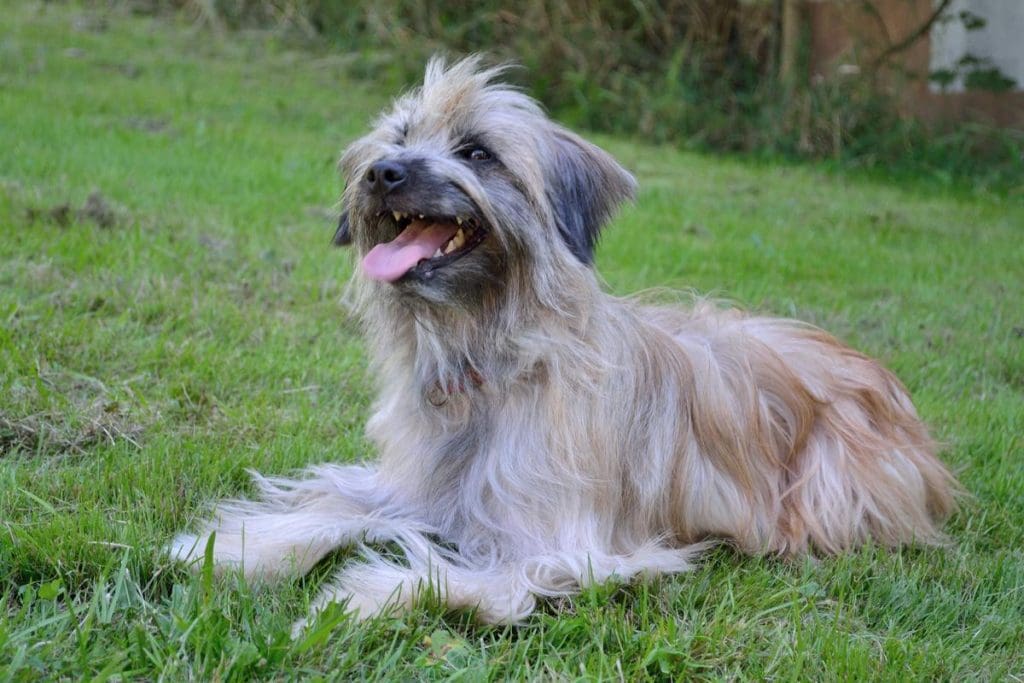
Exercise and physical activity can trigger dog panting.
When a dog engages in vigorous exercise or physical activity, it’s completely normal for them to start panting. Just like humans, dogs need to regulate their body temperature, and panting is their way of cooling down. Whether it’s chasing a ball at the park, going on a long hike, or playing an intense game of fetch, dogs will naturally start to pant as they exert energy.
Panting during exercise helps dogs expel heat from their bodies through rapid breathing. It allows them to circulate cooler air into their lungs while releasing warm air through their mouth. This process helps prevent overheating and keeps their internal temperature within a safe range.
High temperatures or humid environments may cause dogs to pant more.
Dogs are not as efficient at regulating body temperature as humans are. Therefore, they are more susceptible to heat-related distress. When the weather is hot and humid, dogs have a harder time dissipating heat from their bodies, leading to increased panting.
In these situations, it’s crucial for pet owners to provide appropriate measures to keep their furry friends cool and comfortable. This can include ensuring access to shade and fresh water at all times, avoiding strenuous activities during the hottest parts of the day, and providing cooling aids such as wet towels or cooling mats.
Stressful situations, such as loud noises or unfamiliar surroundings, can lead to increased panting in dogs.
Dogs are sensitive creatures that can easily become stressed or anxious when faced with unfamiliar or overwhelming situations. Loud noises like thunderstorms or fireworks can trigger fear responses in many dogs, causing them to exhibit signs of distress such as excessive panting.
Similarly, being in new environments or encountering unfamiliar people or animals can also induce stress in our canine companions. Panting serves as an outlet for this anxiety by helping dogs release tension and cope with their emotions.
As responsible pet owners, it’s important to recognize and address these triggers to minimize stress in our dogs’ lives. Providing a safe and secure environment, using positive reinforcement training techniques, and seeking professional help if necessary can all contribute to reducing anxiety-induced panting.
Excitement or anticipation of something enjoyable can also result in dog panting.
Have you ever noticed your dog panting excessively when they’re excited? This is completely normal! Dogs often express their enthusiasm through panting when they anticipate something pleasurable, such as going for a walk, receiving treats, or seeing their favorite human after a long day apart.
Just like humans may experience an increased heart rate or butterflies in the stomach when excited, dogs pant as a physiological response to heightened emotions. It’s their way of releasing pent-up energy and expressing their joy in the moment.
Dogs may start panting when they are in pain or discomfort.
Panting can also be an indication that something is wrong with your furry friend. Dogs may resort to excessive panting when they are experiencing pain or discomfort. This could be due to injuries, illnesses, or underlying medical conditions that require attention from a veterinarian.
It’s crucial for pet owners to pay close attention to any changes in their dog’s behavior and consult a professional if persistent or unusual patterns of panting occur.
Disease-related panting in dogs
Excessive panting is a common behavior observed in dogs, especially after physical activity or when they are feeling hot. However, there are certain medical conditions that can cause dogs to pant excessively even in normal situations.
Cushing’s disease and excessive dog panting
Cushing’s disease, also known as hyperadrenocorticism, is a condition caused by the overproduction of cortisol hormone by the adrenal glands. Dogs with Cushing’s disease may exhibit symptoms such as increased thirst and urination, weight gain, hair loss, and muscle weakness. One of the notable signs of this condition is excessive panting.
The elevated levels of cortisol affect the body’s metabolism and regulatory functions, leading to increased respiratory rate and effort while breathing. This results in dogs panting more than usual. If you notice your dog exhibiting these symptoms along with excessive panting, it is essential to consult a veterinarian for proper diagnosis and treatment options.
Respiratory infections and abnormal breathing patterns
Respiratory infections or diseases like pneumonia can also contribute to abnormal breathing patterns in dogs. When the respiratory tract becomes infected or inflamed, it can make breathing difficult for our furry friends. In response to this discomfort, dogs may start panting excessively as they try to get more oxygen into their lungs.
If your dog has been diagnosed with a respiratory infection or shows symptoms such as coughing, sneezing, nasal discharge, or difficulty breathing alongside excessive panting, seeking veterinary care is crucial. Prompt treatment can help alleviate their discomfort and prevent further complications.
Heart conditions and excessive panting
Heart conditions like congestive heart failure can have a significant impact on a dog’s respiratory system. When the heart fails to pump blood effectively throughout the body, fluid accumulates in the lungs causing difficulty in breathing. This leads to increased respiratory effort, resulting in excessive panting.
If your dog has a heart condition or displays symptoms such as coughing, fatigue, rapid breathing, or pale gums along with excessive panting, it is important to seek immediate veterinary attention. Early diagnosis and proper management of heart conditions can improve your dog’s quality of life and reduce the severity of symptoms.
Anemia and its effect on respiration
Anemia is a condition characterized by a decrease in the number of red blood cells or hemoglobin in the bloodstream. Dogs with anemia may experience increased respiratory rate and effort while breathing due to reduced oxygen-carrying capacity of their blood.
Excessive panting can be one of the signs indicating anemia in dogs. Other symptoms may include pale gums, lethargy, weakness, and decreased appetite. If you observe these signs alongside abnormal panting in your dog, consult a veterinarian for further evaluation and appropriate treatment options.
Metabolic disorders contributing to excessive panting
Metabolic disorders like hypothyroidism can also contribute to excessive panting in dogs. Hypothyroidism occurs when the thyroid gland fails to produce enough thyroid hormones necessary for regulating metabolism. As a result, affected dogs may experience weight gain, lethargy, hair loss, and changes in their skin texture along with excessive panting.
Diagnosing the cause of excessive dog panting
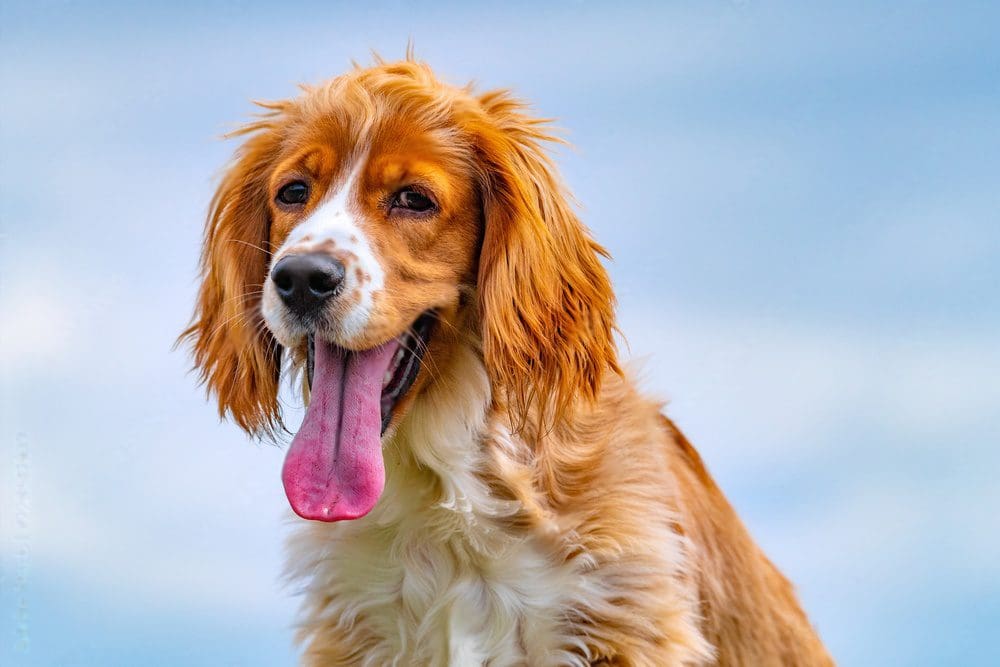
Excessive dog panting can be a worrisome sign for pet owners. It’s important to diagnose the underlying cause of this condition in order to provide appropriate treatment and ensure your furry friend’s well-being. Here are some key points to consider when diagnosing the cause of excessive dog panting.
A thorough physical examination is necessary for diagnosing the underlying cause of excessive dog panting
When your dog exhibits excessive panting, it is crucial to schedule a visit with your veterinarian. During this visit, your vet will perform a thorough physical examination to assess your dog’s overall health and identify any potential issues that may contribute to the excessive panting.
The physical examination will involve checking vital signs such as heart rate, respiratory rate, and body temperature. Your vet will also inspect your dog’s mouth, throat, and lungs for any abnormalities or signs of respiratory distress. By conducting a comprehensive physical examination, your veterinarian can gather valuable information that aids in determining the cause of your dog’s excessive panting.
Blood tests and diagnostic imaging may be required for a comprehensive evaluation
In some cases, blood tests may be necessary to further investigate the underlying cause of excessive panting in dogs. These tests can help identify any imbalances or abnormalities in organ function that could contribute to the condition.
Diagnostic imaging techniques such as X-rays or ultrasounds might be recommended by your veterinarian. These imaging tests allow for a closer look at internal structures like the heart and lungs, helping to rule out certain causes or detect any abnormalities that require attention.
By combining these diagnostic tools with a thorough physical examination, veterinarians can gain a more comprehensive understanding of what might be causing your dog’s excessive panting.
Your veterinarian will assess your dog’s medical history and ask about any recent changes that could contribute to the condition
Understanding your dog’s medical history is crucial when diagnosing the cause of excessive panting. Your veterinarian will inquire about any pre-existing conditions, previous surgeries, or ongoing medications that could potentially play a role in your dog’s current symptoms.
Your vet will ask about any recent changes in your dog’s environment, routine, or diet. Changes such as a new medication, exposure to extreme temperatures, or increased physical activity can all be contributing factors to excessive panting in dogs. By gathering this information, your veterinarian can piece together the puzzle and narrow down potential causes.
Monitoring your pet’s vital signs will help determine the cause of excessive panting
During the diagnostic process, it is essential for veterinarians to closely monitor your pet’s vital signs. This includes regularly checking their heart rate and oxygen levels. Abnormalities in these vital signs can provide valuable clues regarding the underlying cause of excessive panting.
By measuring heart rate and oxygen saturation levels with specialized equipment, veterinarians can assess if there are any cardiac or respiratory issues contributing to the condition. These measurements help guide further diagnostic tests and treatment plans tailored specifically to your dog’s needs.
Additional tests such as X-rays or ultrasounds might be needed depending on the suspected causes
Depending on the initial findings from physical examination and blood tests, additional diagnostic tests may be required to pinpoint the exact cause of excessive panting in dogs.
Conclusion: When to Seek Veterinary Assistance for Dog Panting
Excessive dog panting can be a cause for concern and may indicate an underlying issue that requires veterinary attention. By understanding the signs of abnormal panting, common causes, situational triggers, and disease-related factors, you can better assess when it is necessary to seek professional help for your furry friend.
If your dog exhibits any of the following symptoms alongside excessive panting, it is crucial to consult a veterinarian:
- Labored Breathing: If your dog appears to be struggling or experiencing difficulty while breathing, it could be a sign of respiratory distress.
- Rapid Panting at Rest: Dogs typically pant after exercise or in hot weather; however, if they are excessively panting while at rest or in cooler conditions, it may signify an underlying problem.
- Change in Panting Behavior: Any sudden change in your dog’s normal panting behavior should not be ignored. This includes increased frequency, intensity, or duration of panting episodes.
- Accompanied by Other Symptoms: Excessive panting combined with lethargy, loss of appetite, vomiting, diarrhea, coughing, or any other unusual symptoms should prompt immediate veterinary attention.
Remember that excessive dog panting can have various causes ranging from heatstroke and anxiety to more serious conditions like heart disease or respiratory disorders. A veterinarian will be able to accurately diagnose the underlying cause through a thorough examination and appropriate diagnostic tests.
In conclusion, if you notice any abnormal signs accompanying excessive dog panting that raise concerns about your pet’s well-being, seeking veterinary assistance is essential for proper diagnosis and treatment. Your veterinarian will provide personalized guidance based on your dog’s specific situation and ensure their health and happiness.
FAQs
Can anxiety cause excessive dog panting?
Anxiety can indeed lead to excessive dog panting. Just like humans sweating when anxious or stressed, dogs pant to regulate their body temperature. However, if your dog’s anxiety-induced panting becomes excessive or is accompanied by other concerning symptoms, it’s advisable to consult a veterinarian for further evaluation.
Is it normal for dogs to pant heavily after exercise?
Yes, it is normal for dogs to pant heavily after exercise as a way to cool down. Panting helps them release excess heat and regulate their body temperature. However, if your dog continues excessively panting long after exercise has ended or exhibits other abnormal signs, it may be worth consulting a veterinarian.
Can certain medications cause excessive dog panting?
Yes, certain medications can cause excessive dog panting as a side effect. Some drugs that affect the respiratory system or have an impact on the nervous system can lead to increased breathing and panting in dogs. If you suspect medication-related panting in your dog, consult with your veterinarian for further guidance.
What are some common situational triggers for dog panting?
Common situational triggers for dog panting include exposure to high temperatures or humidity, strenuous physical activity, excitement or stress, pain or discomfort, and fear or anxiety-inducing situations. Understanding these triggers can help differentiate between normal and abnormal levels of panting.
How can I help my dog with excessive panting at home before seeking veterinary assistance?
If your dog is excessively panting but does not exhibit any concerning symptoms mentioned earlier, you can try providing them with a cool and comfortable environment by offering access to fresh water and ensuring proper ventilation. Avoiding strenuous activities during hot weather and keeping them calm in anxiety-inducing situations may help alleviate excessive panting temporarily. However, if the problem persists or worsens despite these measures, consulting a veterinarian is recommended.
Are there any breeds more prone to excessive dog panting?
Certain breeds are more susceptible to excessive dog panting due to their anatomical characteristics or genetic predispositions. Brachycephalic breeds with short muzzles, such as Bulldogs and Pugs, are more prone to panting due to their compromised airways. Dogs with thick coats or underlying health conditions may also experience excessive panting more frequently.

